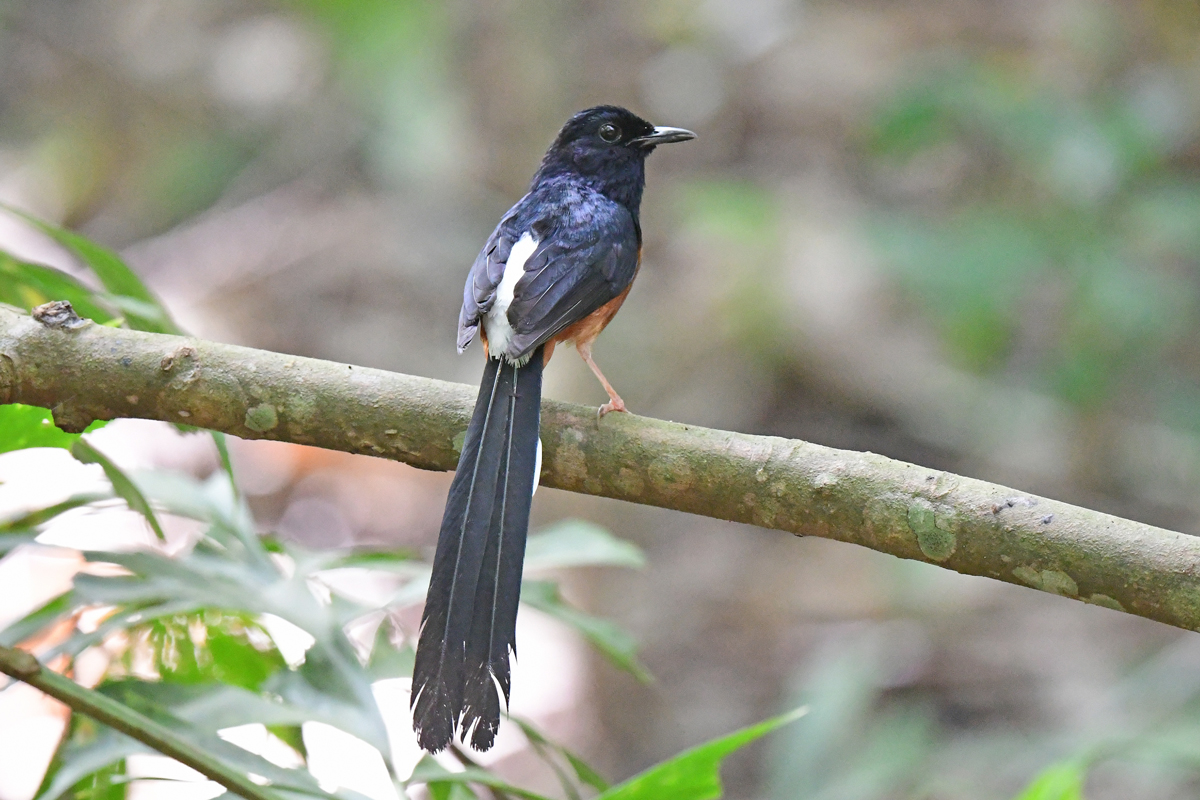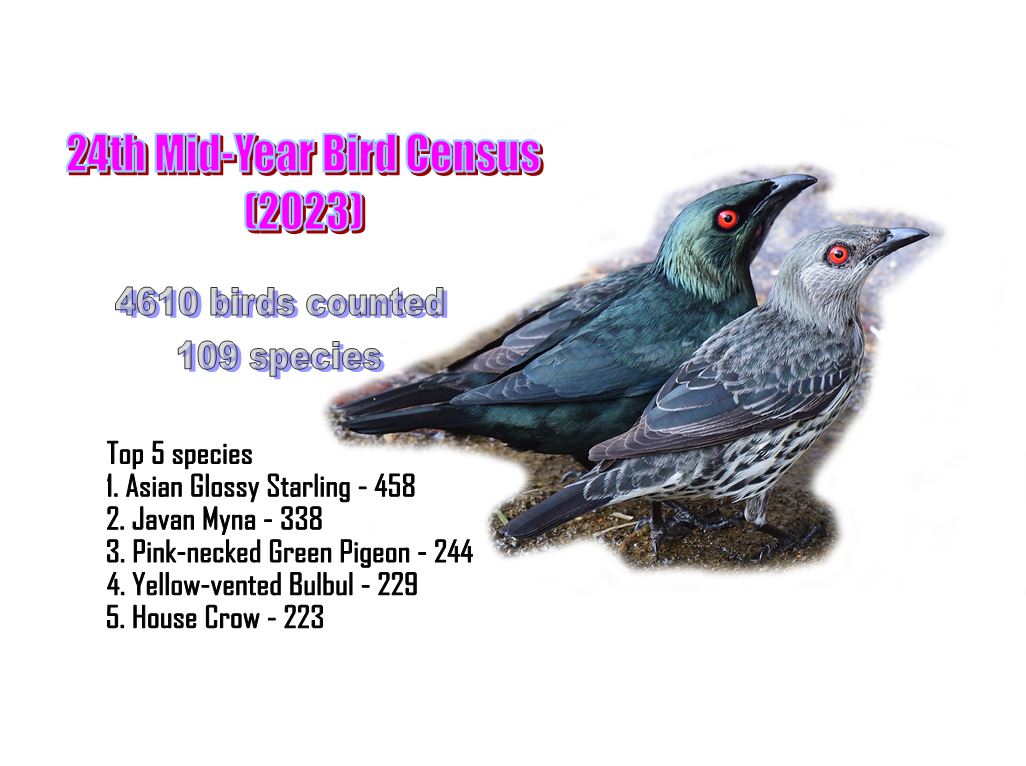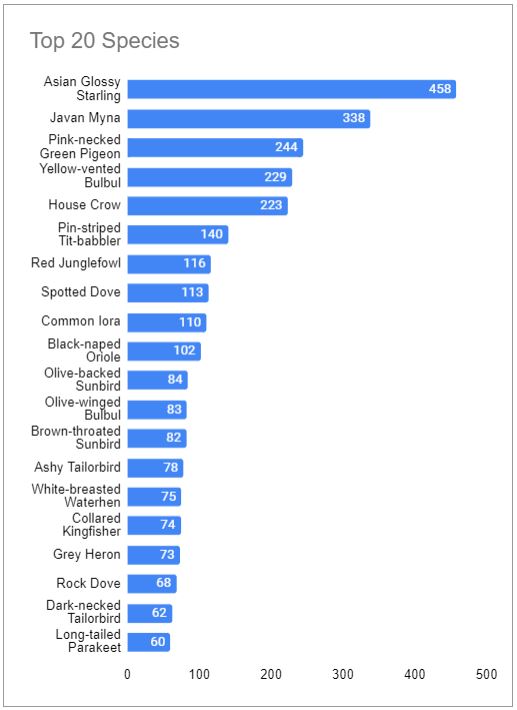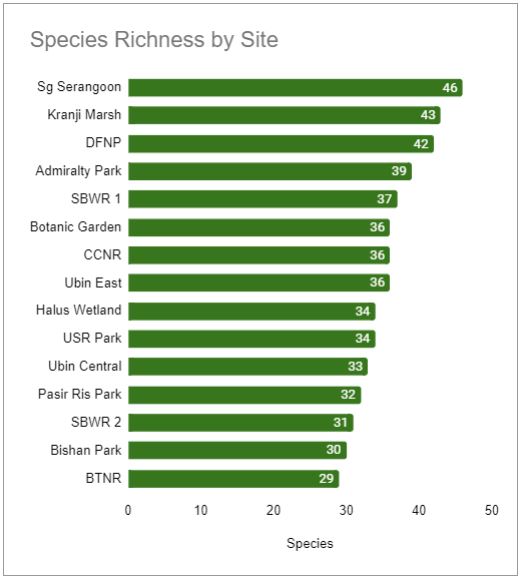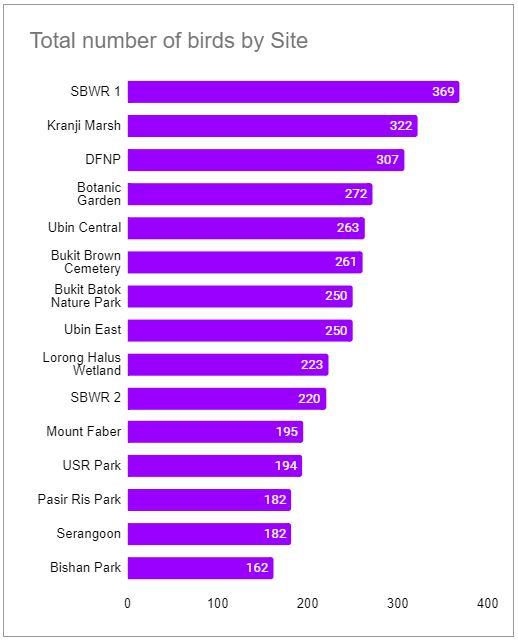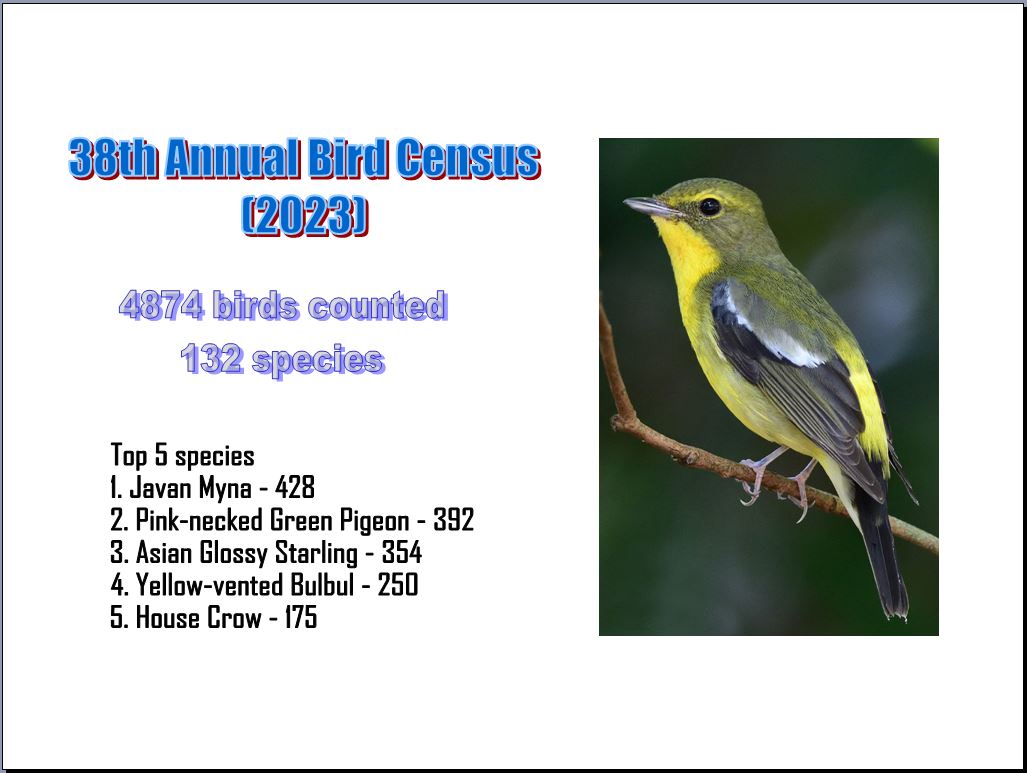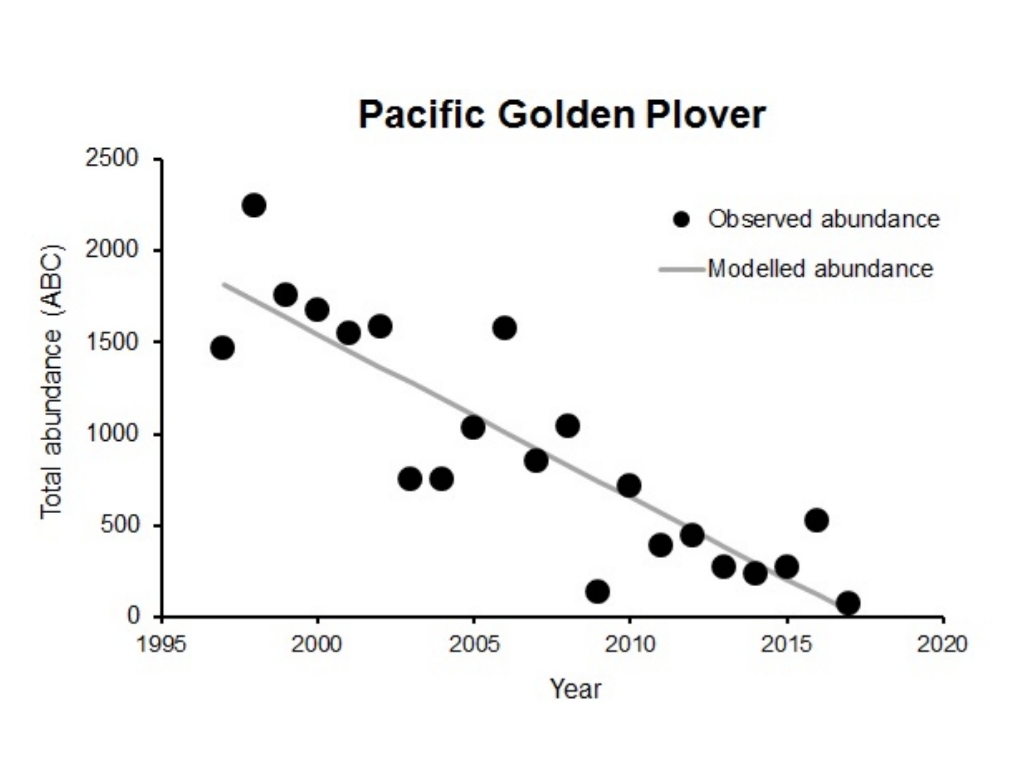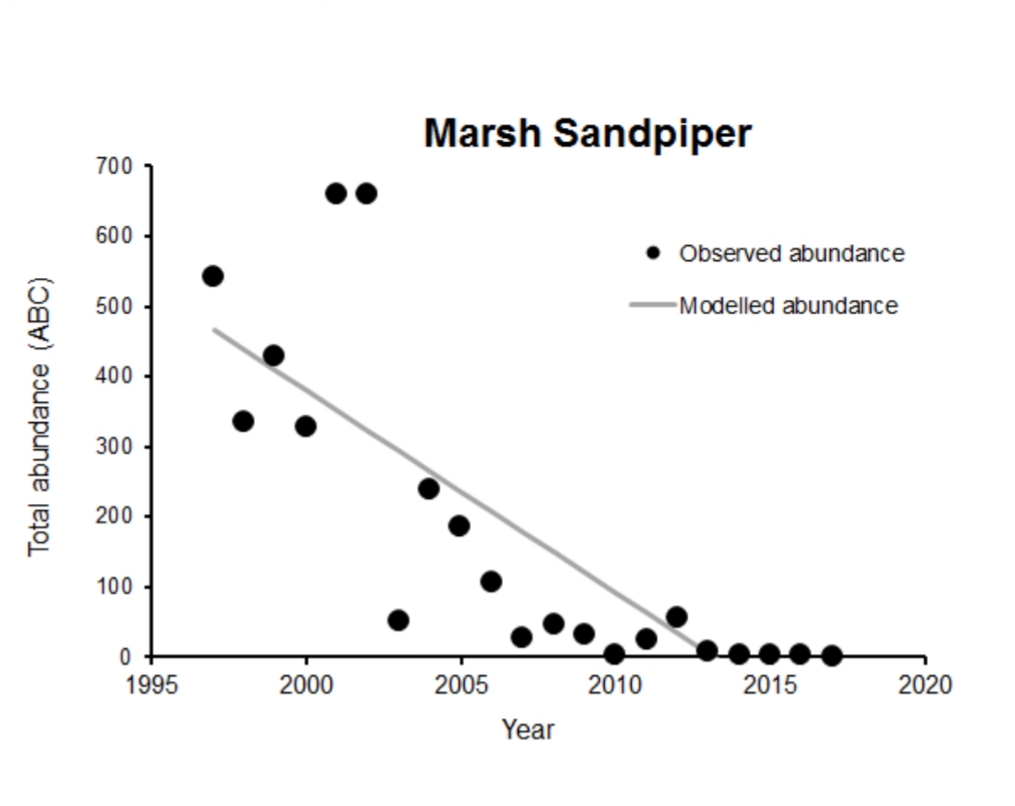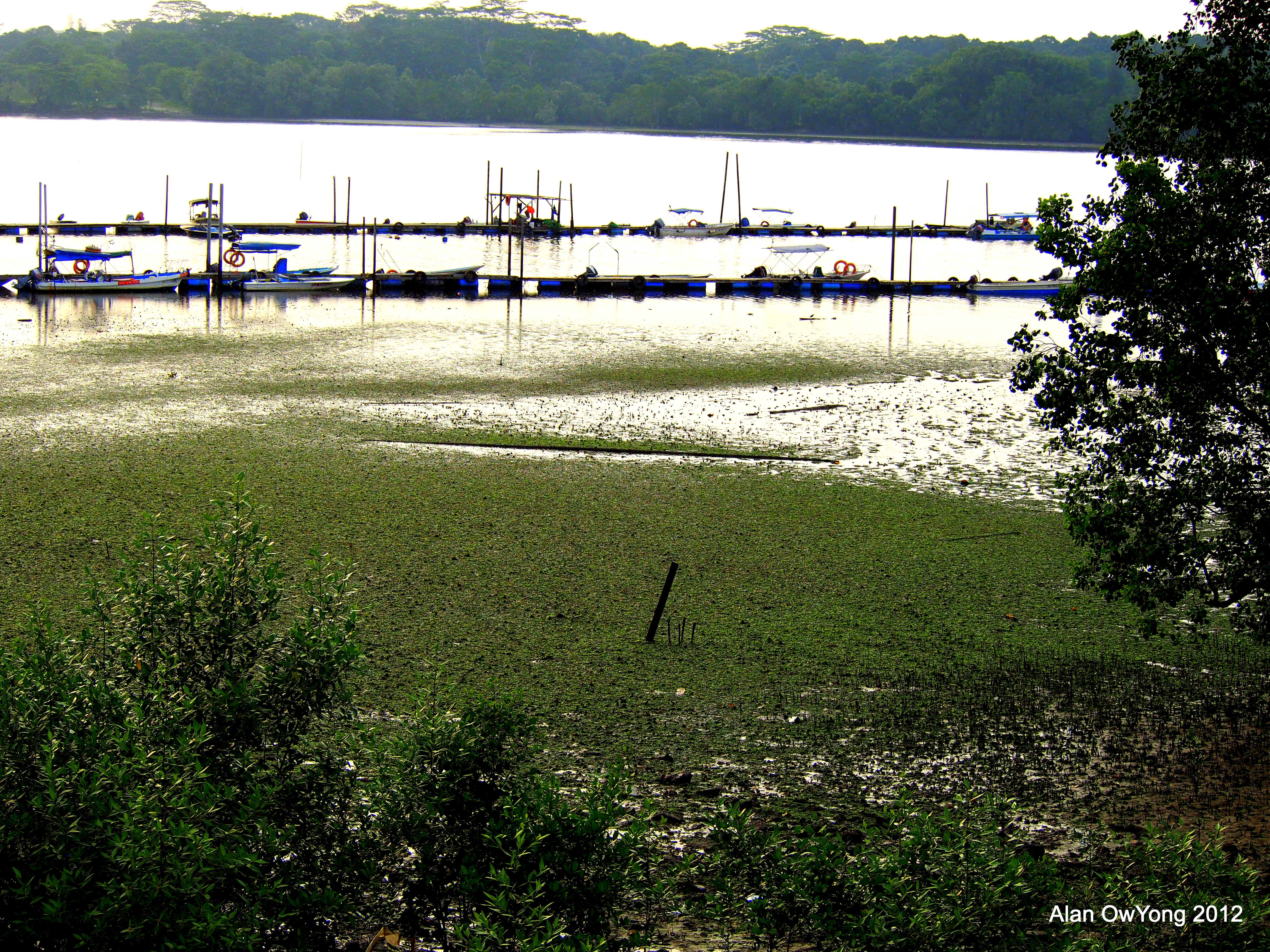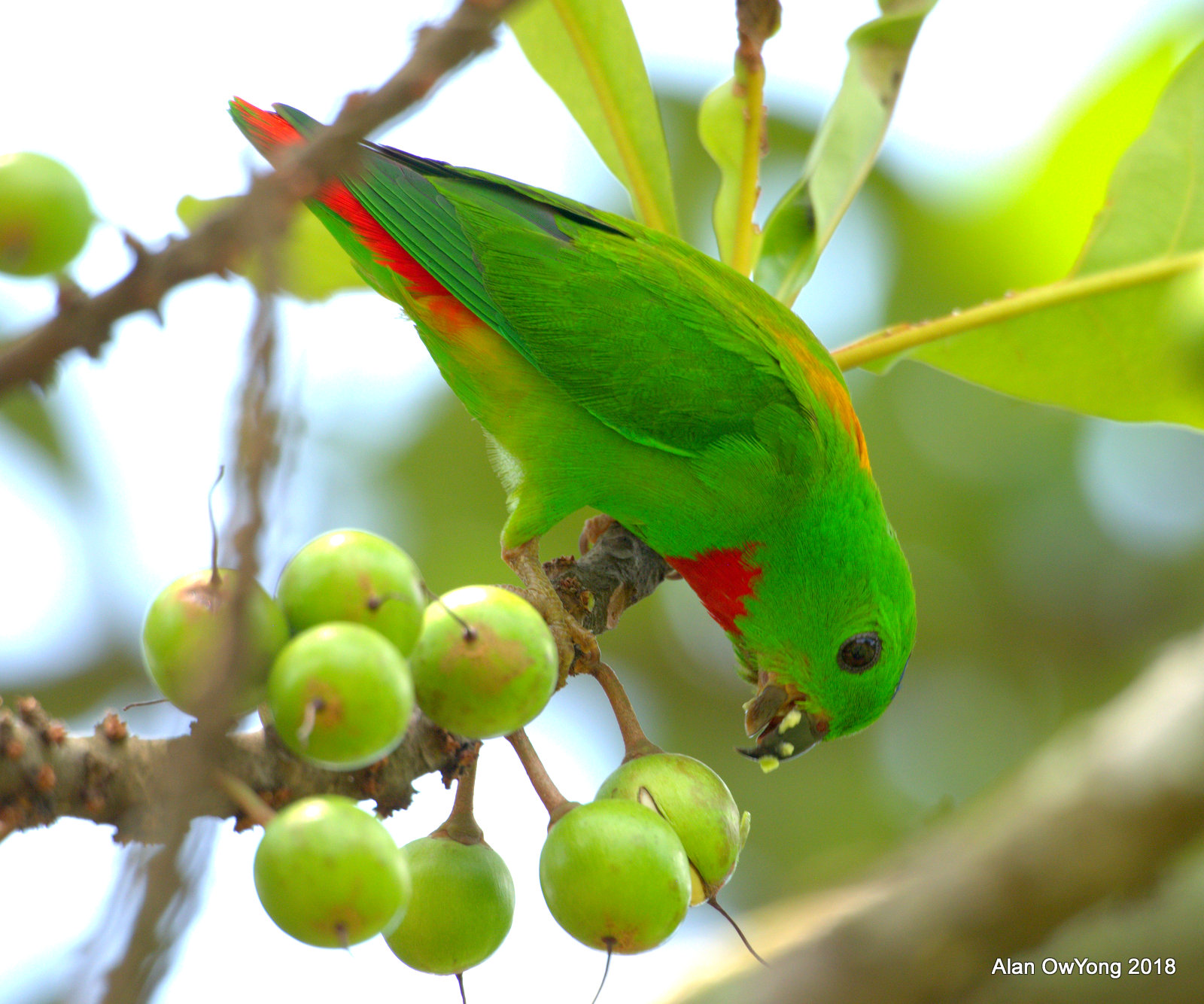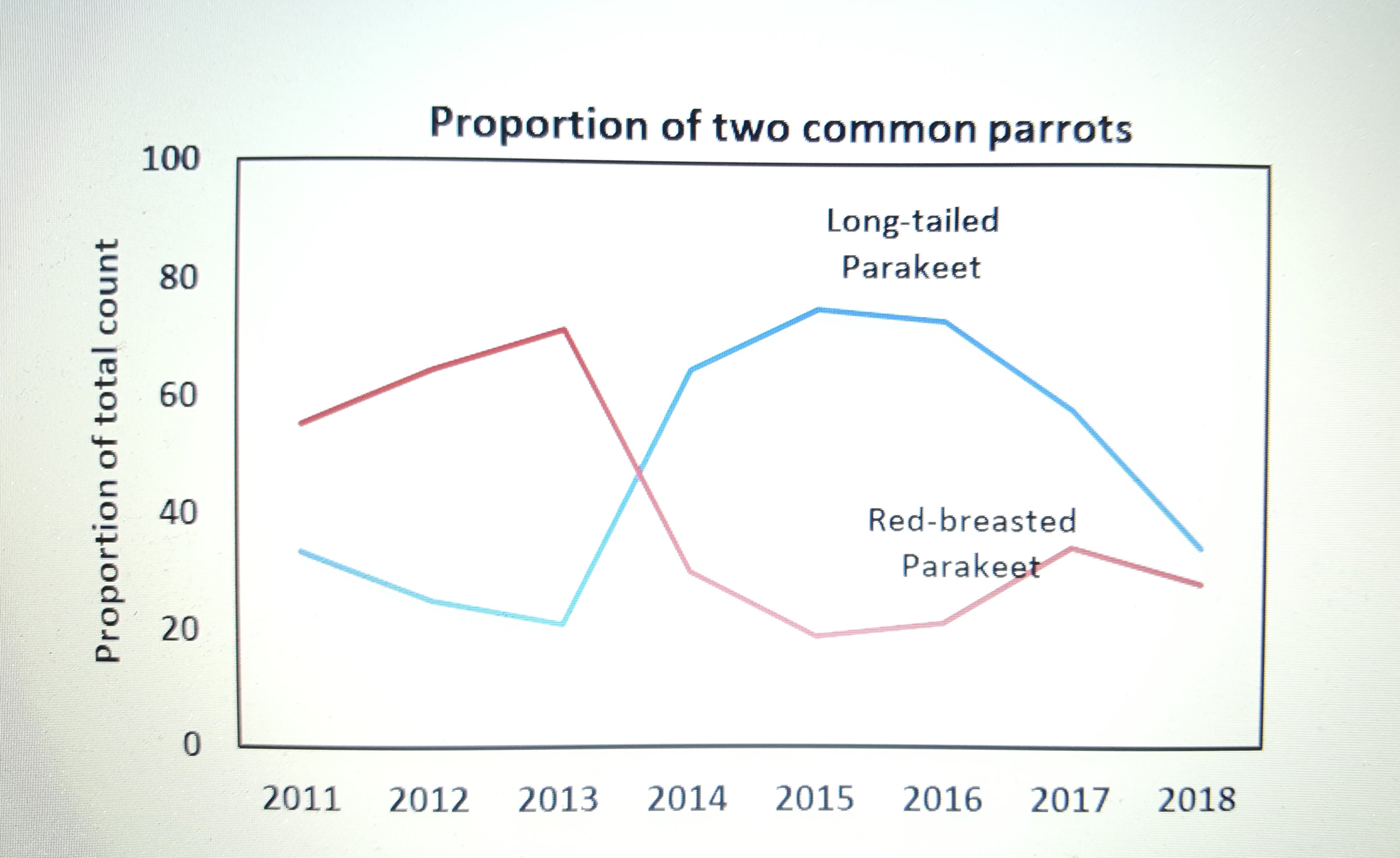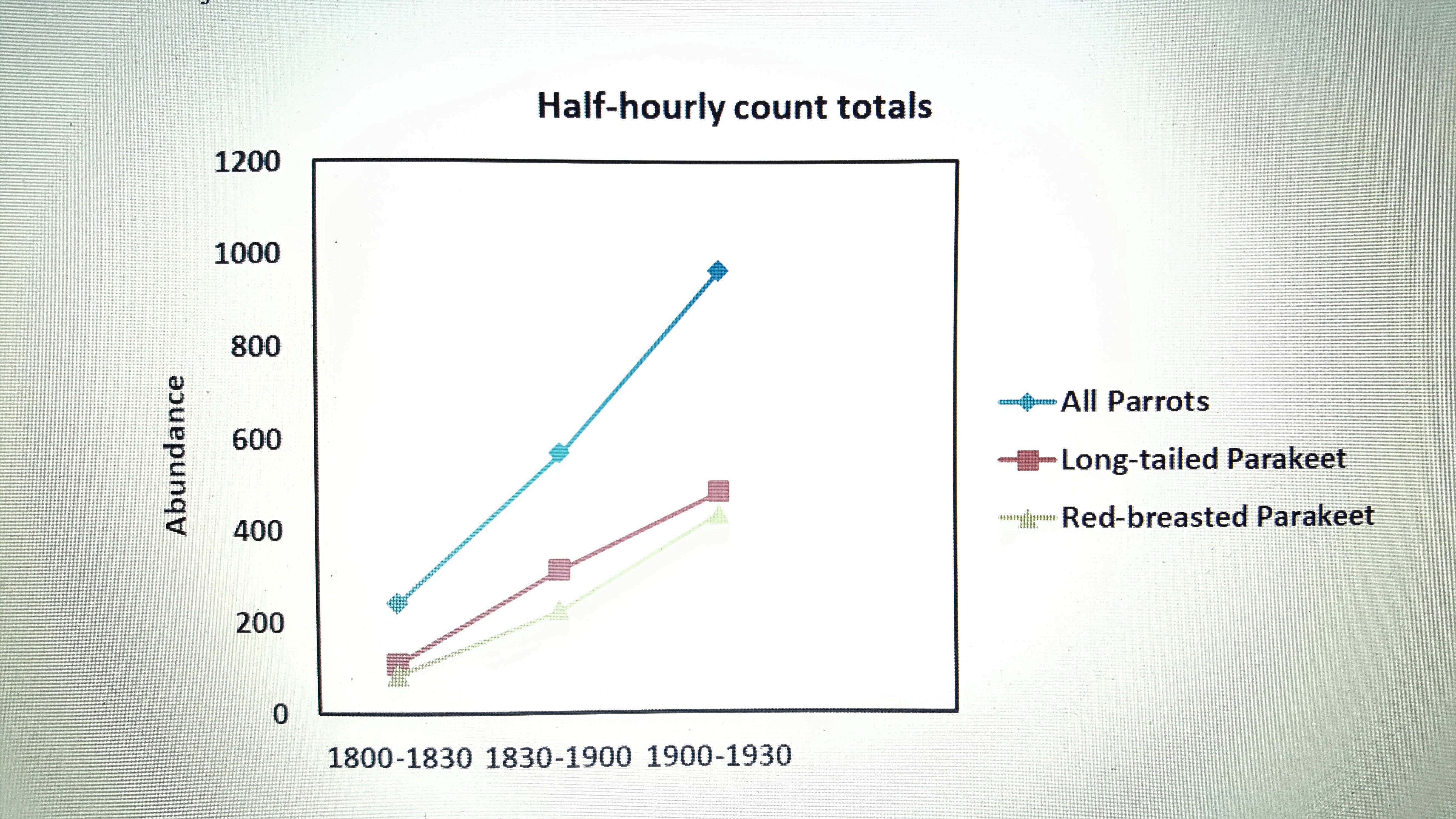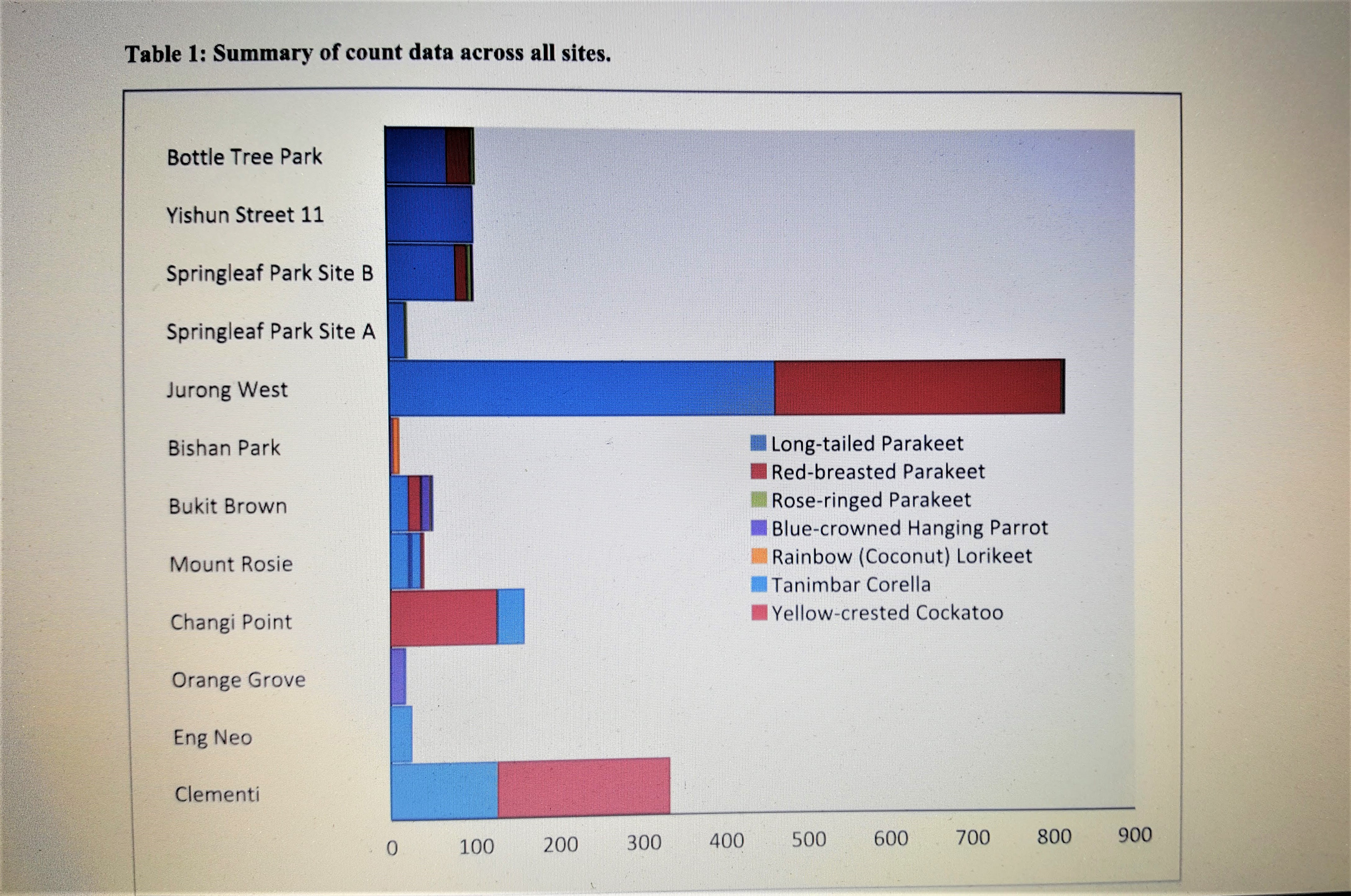
The 20th Fall Migration Bird Census (FMBC) coordinated by the NSS Bird Group was conducted during the weekend of 14-15 October 2023, involving 41 volunteers who covered 24 sites.
Altogether 5,400 birds of 132 species were recorded. Of these, 752 birds of 34 species were migrants, with 4648 resident birds of 98 species. Compared with the Mid-Year Bird Census in July 2023, the top 4 placings remained the same – Asian Glossy Starling (1st) with a doubling of numbers to 917, followed by the Javan Myna (2nd) with 389 birds counted, the Pink-necked Green Pigeon (3rd) with 213 birds counted, and the Yellow-vented Bulbul (4th) with 178 birds counted. The House Crow was displaced from 5th by the migrant Common Redshank with 176 birds. The top twenty species are shown in the table below.
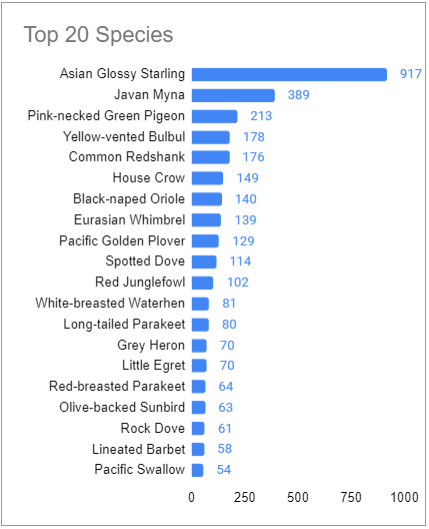
The top 10 migrant species recorded included the Common Redshank, Eurasian Whimbrel, Pacific Golden Plover, etc (see chart below):
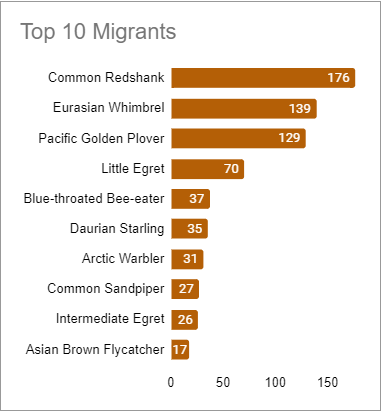
Looking at the top 10 species (excluding the migrants), across the Annual Bird Census, Mid-Year Bird Census and Fall Migration Bird Census for 2023:
- the top 3 spots went to the Asian Glossy Starling, Javan Myna and Pink-necked Green Pigeon, in slightly different order
- the 4th spot was consistently the Yellow-vented Bulbul
- the 5th spot was consistently the House Crow
- the 7th & 8th spots were held by the Red Junglefowl and Spotted Dove

The sites with the most species were Kranji Marsh with 55 species, Sungei Buloh Wetland Reserve route 2 with 48 species, Malcolm Park, Sungei Serangoon and Sungei Buloh Wetland Reserve route 1 all three with 40 species. The sites ranked by species are shown in the table below.
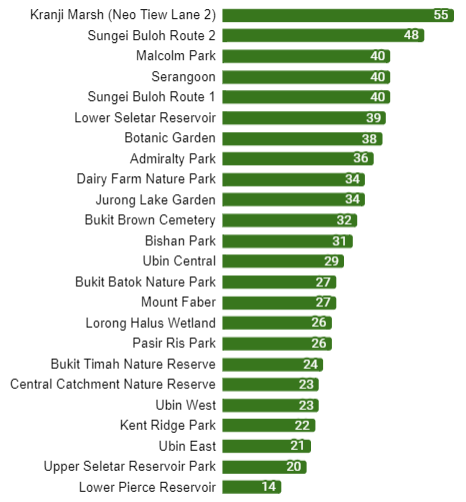
The sites with the most number of birds were Sungei Buloh Wetland Reserve route 1 with 584 birds, followed by Sungei Buloh Wetland Reserve route 2 with 563 birds, Bukit Brown Cemetery with 445 birds, Kranji Marsh with 399 birds, and Malcolm Park with 361 birds. The sites ranked by number of birds are shown in the table below.
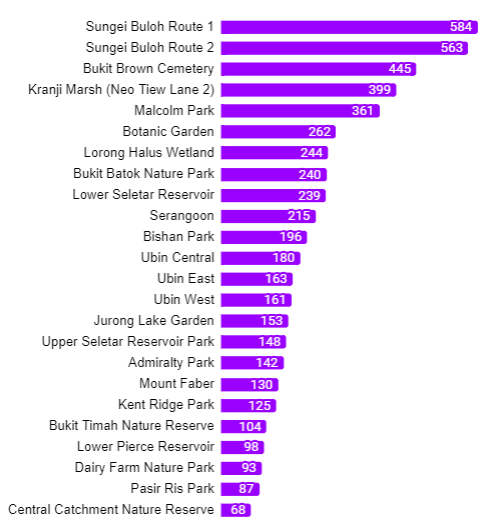
Species recorded in small numbers during the FMBC included:
1 Greater Green Leafbird at Dairy Farm Nature Park
1 Short-tailed Babbler at Dairy Farm Nature Park
1 Lanceolated Warbler at Kranji Marsh
1 Terek Sandpiper at SBWR route 2
1 Chinese Egret at Chek Jawa, Ubin
1 Siberian Blue Robin at Dairy Farm Nature Park
and for the globally critically endangered Straw-headed Bulbul:
52 Straw-headed Bulbuls over 14 sites
Thanks to all the volunteers for their tireless efforts for the census.
| Adam Brown | Lim Kim Seng | Steven Shields |
| Alan OwYong | Megan O’Connor McNeill | Susan Knight |
| Angus Lamont | Meng-Hsuan Chou | Tan Kok Hui |
| Atsuko Kawasaki | Mithilesh Mishra | Tay Meijin Stella |
| Betty Shaw | Murugesen Shanmugavel | Teo Kah Ming |
| Diya Mishra | MY Chan | Toh Yoke Wang |
| Florence Lian | Nessie Khoo | Veronica Foo |
| Geoff Lim | Prakash | Wing Chong |
| Jane Rogers | Rob Arnold | Wong Chung Chung |
| Jimmy Lee | Roger McNeill | Wong Nai Seng |
| John Spencer | Rowan Sham | Yap Wee Jin |
| KP Teh | Sarada Bulchand | Yeo Seng Beng |
| Lee Bee Yong | Spencer Yau | Yong Yik Shih |
| Lim Kim Keang | Stella Tay |

